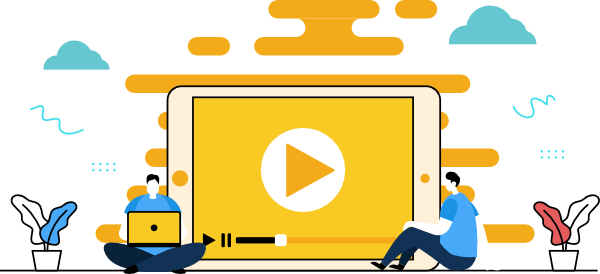Levelling Up! Enhancing Teaching With Gamification And Technology
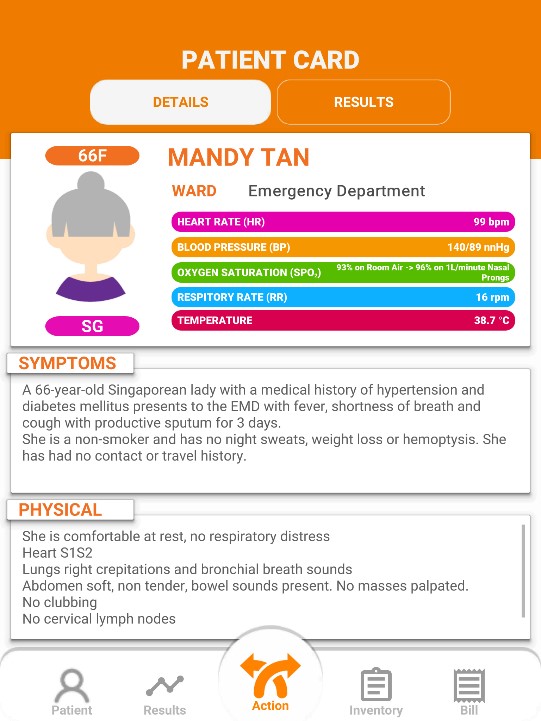
Figure 1.
Case scenario of a straightforward community-acquired pneumonia
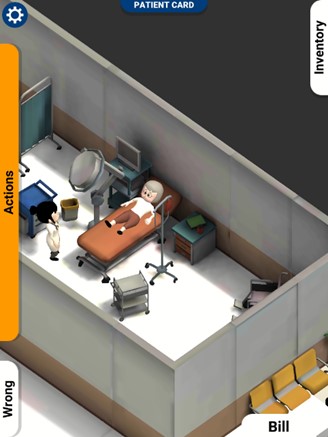
Figure 2.
The cartoon scene of HEALING as the background of the game
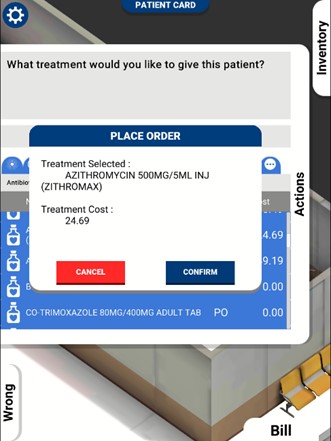
Figure 3.
The cost of treatment (or investigation) demonstrated on the screen after the player made the selection
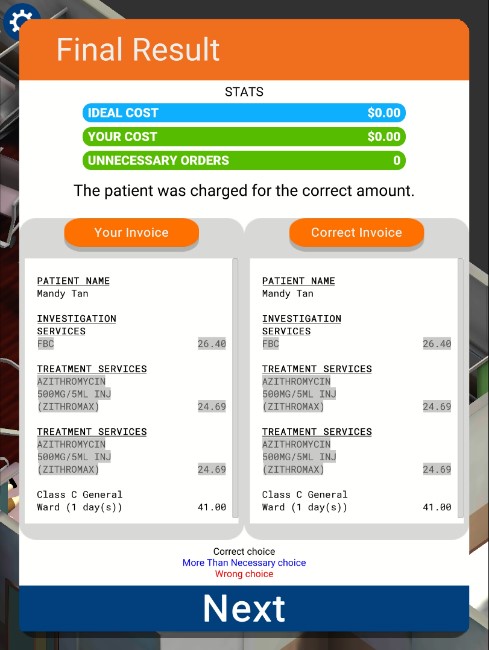
Figure 4.
The final bill of the patient showing playeru2019s invoice and the u201ccorrectu201d invoice, including all the costs of investigations and treatment as well as the methods of payment
by Associate Professor Alfred Kow
Assistant Dean (Education), Yong Loo Lin School of Medicine
Senior Consultant, Division of Hepatobiliary & Pancreatic Surgery, Department of Surgery, University Surgical Cluster, National University Hospital
Senior Consultant, Liver Transplant Programme, National University Centre for Organ Transplantation (NUCOT), NUHS
Senior Consultant, Division of Surgical Oncology, National University Cancer Institute (NCIS), NUHS
Dr Tan Ze Ying
Associate Consultant, Department of General Medicine, Respiratory Medicine Division, Ng Teng Fong General Hospital, National University Health System
Dr Gao Yujia
Associate Consultant, Division of Hepatobiliary & Pancreatic Surgery, Department of Surgery, University Surgical Cluster, National University Hospital
The learning habits of our students change from time to time, and as generations evolve, so must teaching and learning methods. Immediate access to the internet, the widespread ownership of smartphones, electronic and mobile devices, all lead to students growing up as tech-savvy digital natives. Importantly, these factors have changed the way they search for and retain information in their learning. In addition, the continuous influx of knowledge and boom of discoveries in medical fields, particularly where technology plays a large role, is challenging the relevance of traditional ways of teaching and learning which are rapidly becoming outdated. However, developments in virtual and mixed reality, gamification tools, simulation tools and other tech can now be used to fill the gaps in current training methods in medical education, opening up endless possibilities for teaching and learning.
nWhile the fundamentals of medical education should and must still be between the students and real patients, other innovative and interactive learning encounters can enhance the learning experience. As such, NUS Medicine aims to be the leader in developing innovative models of teaching and learning in this respect. Many of these technologies leverage on the daily learning habits of the students, by prompting and tracking learning, facilitating recall and training of knowledge and skills. Importantly, the tools complete the triangle of teaching, learning and assessment.
Through this learning tool, learners are exposed to diverse clinical scenarios involving patients of various demographic profiles which require their decision-making on the ordering of investigations and management procedures.
UNDERSTANDING HEALTH ECONOMIC ASPECTS WITH HEALING
A recent innovation the School created is HEALING, or Health Economics Awareness LearnING, a technology-enhanced simulation game that educates medical students on the importance of healthcare economics. The main pedagogy in this game utilises information and knowledge in healthcare spending, including cost of investigations and treatments as well as methods of financing hospital bills, to train players on what constitutes optimal cost- efficient clinical care to patients.
nThrough this learning tool, learners are exposed to diverse clinical scenarios involving patients of various demographic profiles which require their decision-making on the ordering of investigations and management procedures. At the end of the game, learners obtain feedback on the cost and the appropriateness of treatment they have administered compared to the necessary, cost-effective treatment. Through this experience, learners are made aware of the financial impact of their decisions, while gaining knowledge about the different categories of charges and subsidies, which are useful in guiding their behaviours and decisions in future practice.
nSince the emphasis of this game is not on clinical decision making, scenarios are categorised into straightforward and complex ones. For example, a case of simple community-acquired pneumonia with straightforward investigations and treatment options, illustrates the cheapest and most straightforward cost of treatment.
nOn the other end of the spectrum is a scenario of an elderly patient with multiple comorbidities and complicated pneumonia, requiring prolonged treatment and multiple investigations, and who as a result faces elevated costs.
More importantly, the game also teaches students the various payment options in Singapore, to illustrate cost differences from one scheme to another. We hope to strengthen our studentsu2019 knowledge in this area and build a healthy habit of choosing wisely when they enter into clinical practice in the future.
nHEALING is easily accessible for use on iPads and is available on the App Store. As the app facilitates synchronous learning, students are able to access it to learn anytime and anywhere. With HEALING incorporated into the Healthcare Economic Series in the Schoolu2019s core curriculum, it will supplement studentsu2019 learning from actual interactions with patients and learning encounters surrounding this topic.
